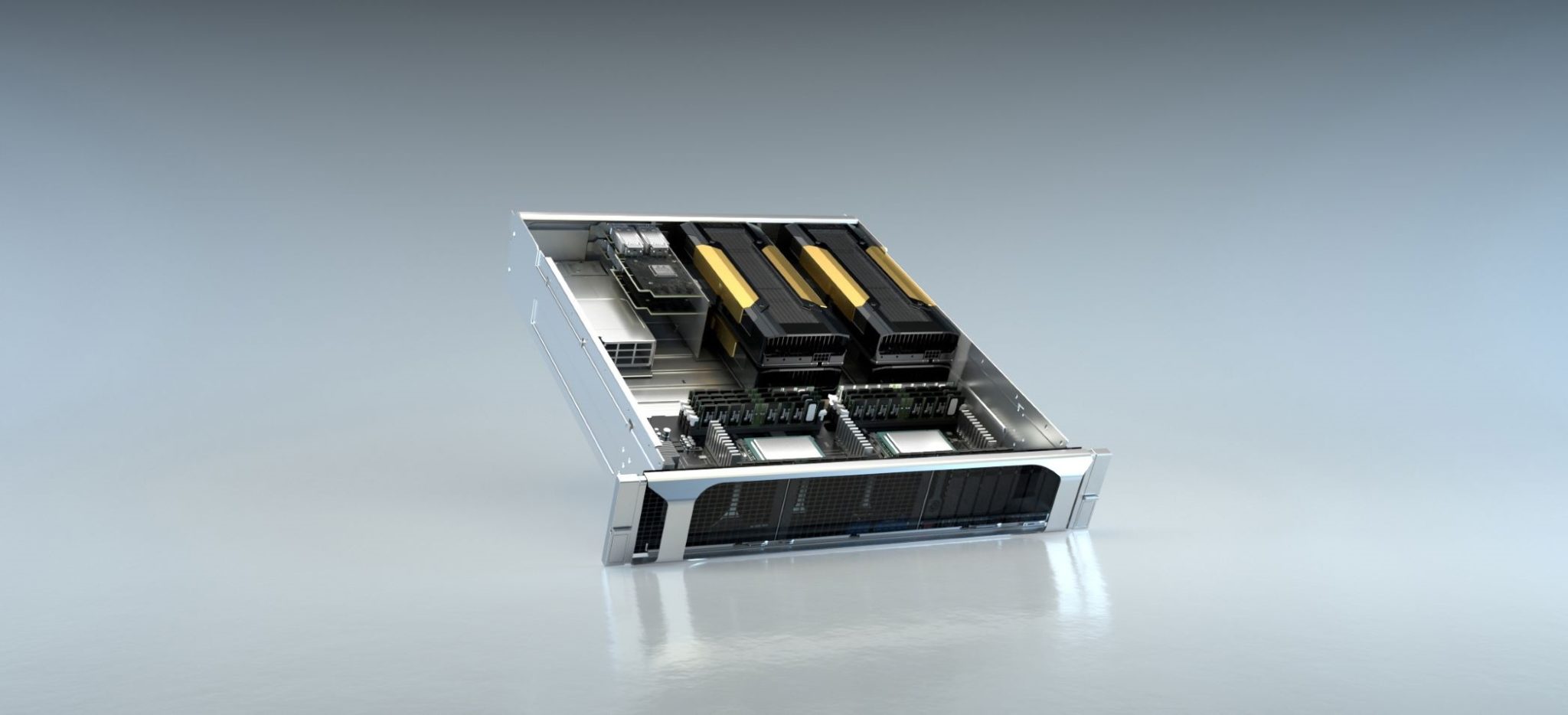
Nvidia has unveiled a new “supercomputer for the edge” – the EGX Edge Supercomputing Platform – a “high-performance, cloud-native” platform designed to crunch the colossal amounts of data flowing through 5G networks.
The offering is central to Nvidia’s push to play a key role in the 5G hardware stack and, essentially, helps users bring GPU acceleration and virtualisation to 5G radio access networks (RANs). It comes with two software development kits (SDKs) for telcos to build virtualised 5G RANs, using off-the-shelf servers with NVIDIA GPUs.
The Nviidia EGX Edge stack itself includes a driver, Kubernetes plug-in, container runtime plug-in and GPU monitoring software. Telcos can install all required Nvida software as containers that run on Kubernetes, giving flexibility. (The stack architecture is supported by Canonical, Cisco, Nutanix, Red Hat and VMware.)
EGX Edge Supercomputing Platform: Early Adopters…
The company has announced partnerships with Ericsson, Microsoft and Red Hat.
Early adopters include BMW, Samsung Electronics, Walmart, the cities of San Francisco and Las Vegas. These are using – among other examples – the high-powered edge “supercomputer” to power video analytics of automotive production, real-time pedestrian counts for local retailers, and other “AI at the edge”-type data crunching.
Speaking at the Mobile World Congress in Las Vegas, Jensen Huang, Nvidia CEO commented that: “We’ve entered a new era, where billions of always-on IoT sensors will be connected by 5G and processed by AI. Its foundation requires a new class of highly secure, networked computers operated with ease from far away.”
The EGX platform is highly scalable, starting at a Jetson Nano moving all the way to Nvidia’s high performance T4 servers.
EGX Edge Supercomputing Platform Hardware

The Jetson Nano is a 70 x 45 mm system on a module device that is capable of encoding and decoding 4K video at 30 frames. Inside it holds 128 CUDA cores and a Quad-core ARM Cortex-A57 with 6GB of memory.
It runs on Nvidia’s GPU Maxwell architecture and is designed with the edge device market in mind, as power for edge devices is a constant concern it supposedly can run high performance operations at just ten watts.
At the other end of the EGX platform users can choose to go with a full server rack of Nvidia T4 servers. Containing 320 Turing Tensor cores T4 servers are able to do mixed-precision operations of 65 TFLOPS and has a memory of 16 GB that can process 300 GB per second. Both of these offerings are now supported by Nvidia EGX platform for edge computing that has been optimised to run a host of cloud-based software stacks. This stack is specially designed to help firms run real-time AI services such as computer vision, speech recognition and data analytics software.
Industry Collaboration
As part of its push towards edge computing Nvidia is partnering with Microsoft to optimise and integrate the EGX platform into Azure.
Once such optimisation is the Nvidia Metropolis video analytics application framework, an optical analytics tool that can process video feeds helping to manage traffic in busy cities or facilitate remote inspections on factory equipment.
Satya Nadella, CEO of Microsoft commented in a release that: “In a world where computing is becoming embedded in every place and everything, organizations require a distributed computing fabric that spans the cloud and edge.”
Hello, Helm Charts
The EGX platform now also comes with a plug-in for the open-source container-orchestration system Kubernetes. The GPU Operator is a Helm Chart deployment, Helm Charts are automated software which is deployed on Kubernetes.
Nvidia is now including a Helm chart registry to make it easier to run and manage AI software. The system allows IT teams to remotely manage GPU-powered servers in the same manner that they manage CPU-based systems. Collating all of a networks remote systems into a single image. Nvidia has also partnered with open source enterprise firm Red Hat to deliver software-defined 5G wireless infrastructure support to the telecoms industry. Both firms will first focus on 5G radio access networks with the overall goal of making it easy for the telecom industry to engage with AI-drive 5G technology.
Jim Whitehurst, CEO of Red Hat commented that: “The next generation of mobile networks won’t be defined by inflexible, proprietary solutions — it will be founded in open cloud-native technologies,” said “As a leader in building open, innovative telecommunications infrastructure, we see a tremendous advantage to running standardized software at the telco edge, helping to enable a range of new workloads via dynamically scalable services.”






